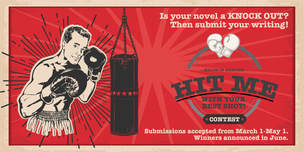MALICE IN MEMPHIS MYSTERY WRITERS GROUP
CONGRATULATES the WINNERS of the
2018 Hit Me with Your Best Shot
Compelling Openings Award
FIRST PLACE
Freeze on Me by Robert Bear
SECOND PLACE
Damn Vampires by Robert Bear
THIRD PLACE
Private Kupchak by Daniel Cordera
aka Daniel Reece
Honorable Mentions
Justin Siebert & Megan Marcellini
Thanks to all who participated!
Stay tuned for our next contest…
CONGRATULATES the WINNERS of the
2018 Hit Me with Your Best Shot
Compelling Openings Award
FIRST PLACE
Freeze on Me by Robert Bear
SECOND PLACE
Damn Vampires by Robert Bear
THIRD PLACE
Private Kupchak by Daniel Cordera
aka Daniel Reece
Honorable Mentions
Justin Siebert & Megan Marcellini
Thanks to all who participated!
Stay tuned for our next contest…







 RSS Feed
RSS Feed